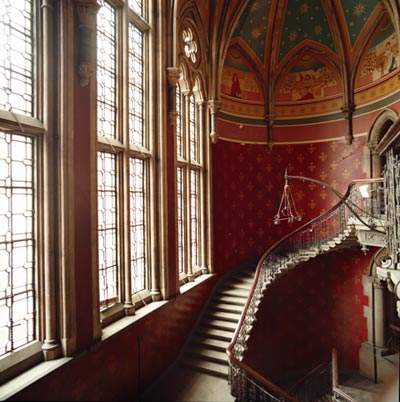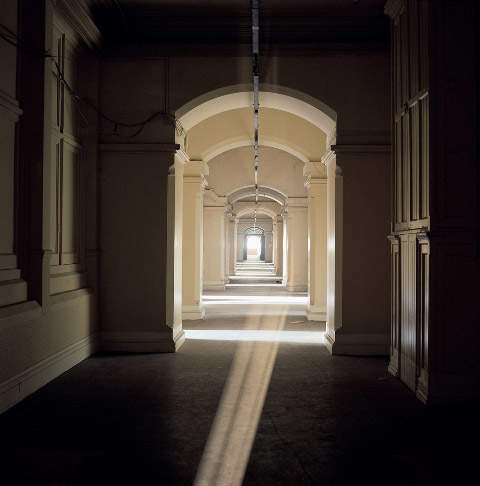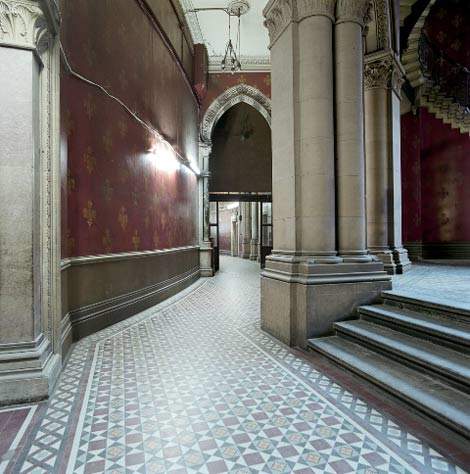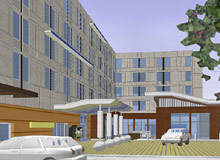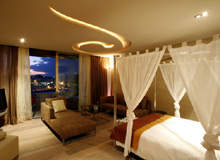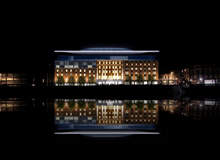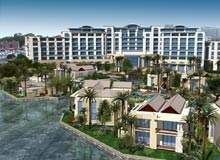Marriott Renaissance is a new 245-room renaissance-branded hotel under a management contract with the Manhattan Loft Corporation. The property is a conversion of the 323,000ft² Midland Grand Hotel, which is located at London’s major railway station, St Pancras, in the UK.
The original building was designed by architect George Gilbert Scott and was opened to guests on 5 May 1873 after a complex construction process.
The total cost for the original building, which housed 300 rooms, all with fireplaces, was £438,000.
Its architecture is a mix of styles, but is mainly based on a polychromatic Italian Gothic design inspired by John Ruskin’s Stones of Venice.
The hotel was built adjacent to Barlow’s great train shed to serve St Pancras rail station and functioned as such until 1935, when the facilities became outdated and too expensive to run.
The hotel was converted into offices for British Railways, renamed St Pancras Chambers, and used until the 1980s when the building was closed and left empty after failing its fire certificate.
St Pancras regeneration project
St Pancras was refurbished and opened in December 2007 as a transit hub and terminus for Eurostar trains in London, via the new North Kent high-speed rail link.
This helped renew interest in the old Midland Grand Hotel, which is owned by London and Continental Railways, and a project was conceived in late 2006 to convert the building into a luxury hotel with apartments.
The new project covers an area of 29,399m² and has cost approximately £150m. The upper floors of the building were converted into 67 apartments (the cheapest of which has sold for £1m) along with a 245-room hotel with 38 suites as part of the project. The hotel was opened in May 2011. The facility was initially expected to be completed by 2009, but was postponed due to a delay in construction.
The development required an additional wing – the Barlow House – to be added to the original building to house 193 rooms. This was constructed opposite the British Library.
English Heritage insisted that the addition to be in the style of the original architecture because the original hotel building is Grade I listed.
The new Barlow House wing was the centre of controversy over what design elements were to be incorporated, but the matter was settled and, although foundations were taken from a different building, the wing’s new red brick facades will be an aesthetically pleasing addition to the Marriott Renaissance hotel.
A grand staircase was constructed to enhance the glory of the hotel. The construction was carried out with materials that matched the old building.
Accommodation at Manhattan Loft Corporation’s Marriott Renaissance
The hotel has 245 guestrooms, including 38 Victorian suites. The new extension Barlow House is 120,000ft² in area. All the internal rooms, which are of historic significance, were restored to their former splendour. The main building houses 52 guestrooms, with the remainder in the new bedroom wing.
The amenities include high-speed internet access, flat screen TVs and in-room safes.
Meeting and events facilities at the luxury central London hotel
The Marriott Renaissance has nine meeting rooms. Hansom Hall, the largest meeting room with 4,865ft² space, can accommodate up to 550 people. In addition, the hotel has a function room, ballroom and business centre.
Dining and other facilities
The Gilbert Scott restaurant at Marriott Renaissance offers classic British food items. Celebrity chef Marcus Wareing operates the restaurant with collections of British classic food.
The hotel will also feature the Booking Office Bar, which will serve Victorian and Contemporary punches, ales, ciders and perries.
The hotel will also have a spa, swimming pool, a health and leisure centre and a fitness centre.
Contractors for the Marriott Renaissance
The new hotel involved contractors who are experts in their respective sectors. The scheme was developed by Manhattan Loft Corporation and was designed by RHWL Architects in conjunction with Richard Griffiths Architects.
The main contractor of the project was Galliford Try Construction. The interior design contract was awarded to GA Design.

